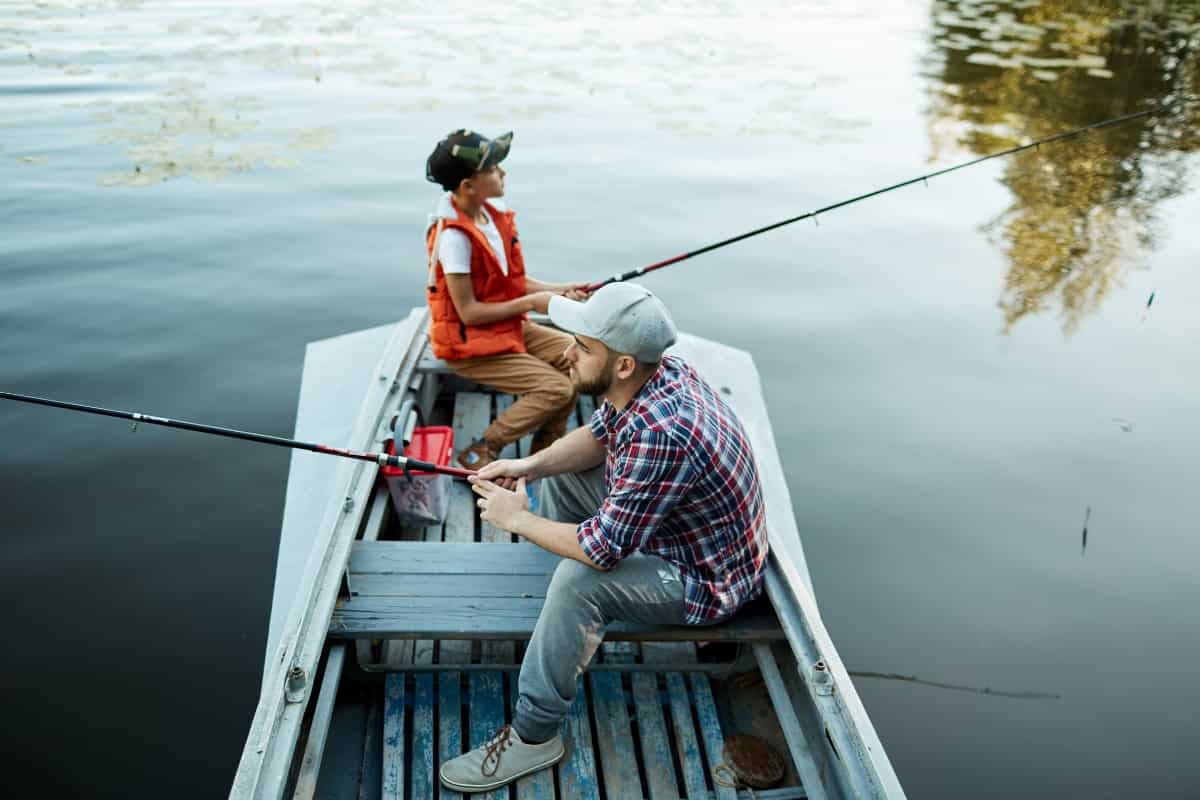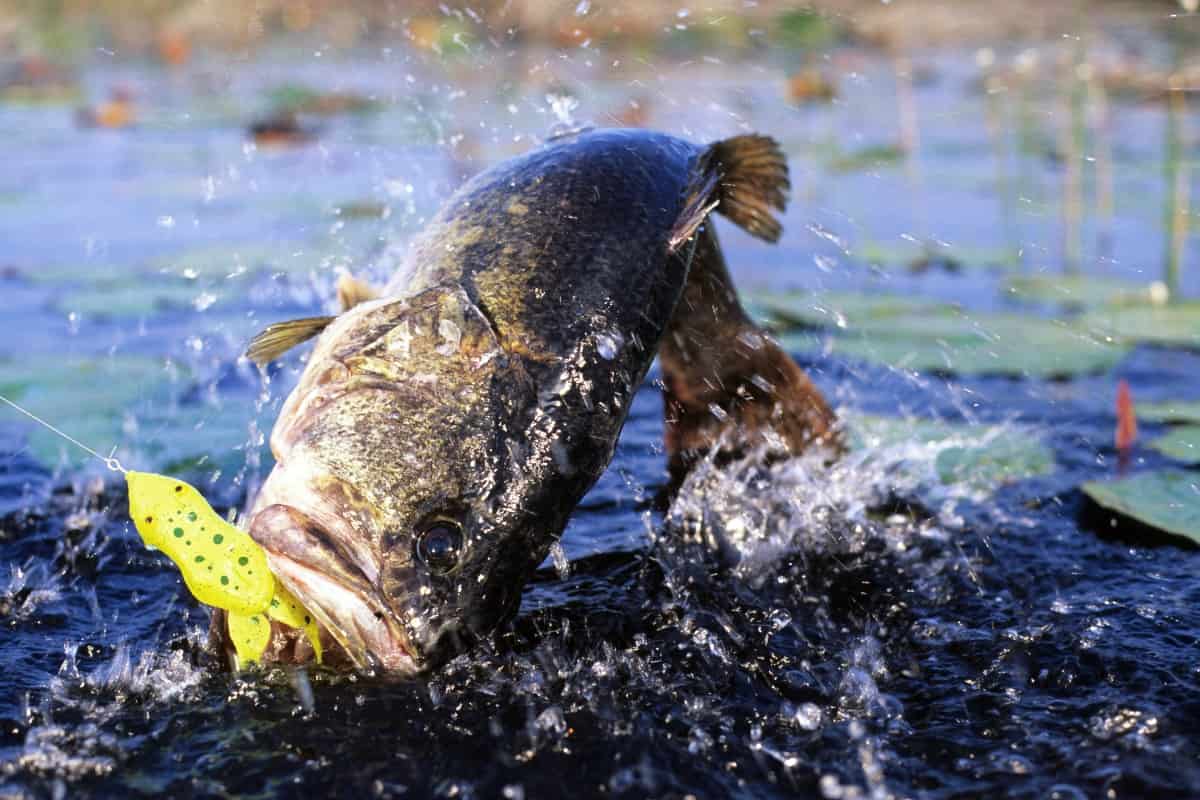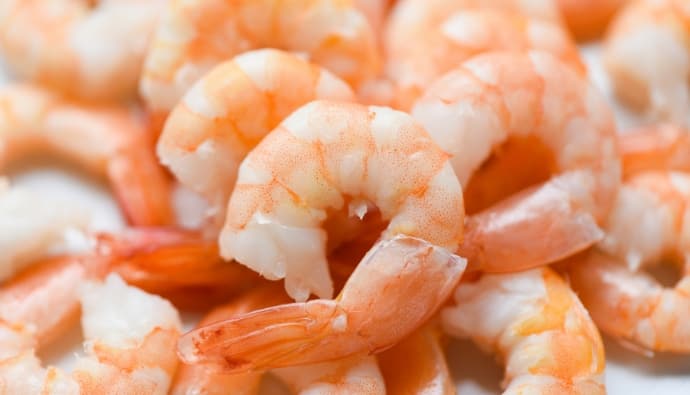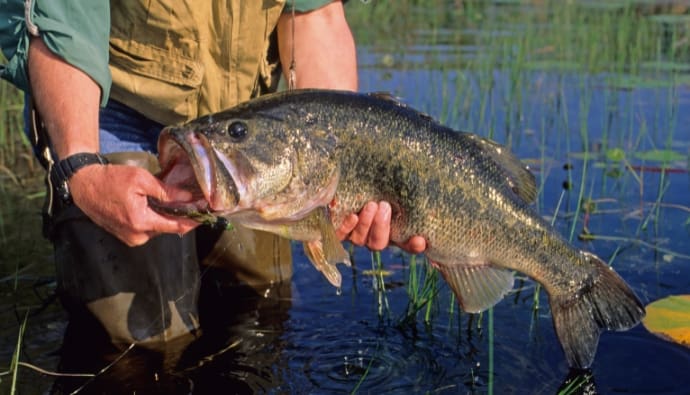A giant largemouth blowing up on a topwater frog is undoubtedly the most thrilling method for catching bass. Bass frog fishing gives an exciting, quick-paced opportunity for sight fishing that will test your patience. In some cases, it might even be the most efficient way of catching bass.
You need to understand more about frog bait types, tackle options, and how bass strike their prey if you want to constantly catch bass on frog lures. Here you will learn about all those aspects together with frog fishing tips.
How To Pick The Best Frog Bait Types
To capture bass with frogs, you should know the various frog bait types and where to fish for them. These include:
Hollow Bodied Frog
This is the most common and popular frog bait. It has a hollow body to help it float and a pointed snout. Most styles have protruding rubber strands that serve as “legs” and add “life” to the frog.
The frog’s pointed nose makes it easier to move around dense cover; hence suitable for fishing in emergent plants, undergrowth, and amid lily pads. These frogs also have recessed hooks that enable them to walk smoothly on deeper water and shallow grass mats.
Swimming Frog
Swimming frogs are built with solid plastic and hollow bodies since they are typically fished more quickly with a straight retrieve. They have the frog’s actual appearance from the patterns to colors and stimulate swimming in real life.
Some hollow-bodied designs have two movable solid legs or a solid paddle tail trailer that provide the lure with lots of motion as it glides through the water or scanty vegetation.
Swimming frogs such as buzz bait cause less noise though they are fished similarly. It shines when an angler wants to cross water without being hung up. As opposed to buzz baits, these baits are virtually weedless; you may cast them over grass, pads, and laydowns without worrying about them hanging up.
Poppin’ Frog
Popping frogs have “scoop” or Pop’R style mouths and hollow bodies that enable them to create a lot of disturbance on the surface. These frogs often have good balance, and besides looking like frogs, they are mainly designed to resemble baitfish.
The frog’s design makes it less able to move through heavy vegetation than its pointed-nose frog brother. On the other hand, the popping frog will stir up the water and produce noise, making it perfect for fishing open water. It is also ideal when you want to fish near docks, rip rap, and laydowns.
Selecting Frog Bait Colors
The frog bait color is essential as it determines if you will strike a bass. Anglers must remember that bass frequently feeds on shad, bream, and other baitfish; hence “trying to match the hatch” is crucial.
With this knowledge, an angler will always choose three colors for almost any bass fishing water: black, white, and some form of “bluegill” hue.
The white frog is a suitable choice when the bass is focused on shad. Besides, it is an excellent option for anglers on foggy, low-visibility days.
Use the black frog in muddy water since it helps the fish see the silhouette more clearly. The Bluegill-colored frog is the best color choice when fishing near bream beds and when fish are up shallow feasting on bream. You will also tie on this frog when the water is clear.
Tackle for Frog Fishing
It’s crucial to consider your fishing location when choosing your frog fishing gear. You need to beef up your rod and line when fishing around the reeds and pads. For this situation, it is advisable to use a heavy rod and 65-pound braid.
Drop a 30-pound braid for a longer casting distance when fishing open water. If you want to extend your casting distance, you can use a longer rod. A longer rod tip will enable you to execute more precise casts.
A high-geared or fast reel will serve you best in these two scenarios since you want to get the fish into the boat rapidly and out of cover. Besides, a high-speed casting reel lets you pull in more line with every reel turn, helping you reduce the range on the long-distance hooksets you frequently view in frog fishing.
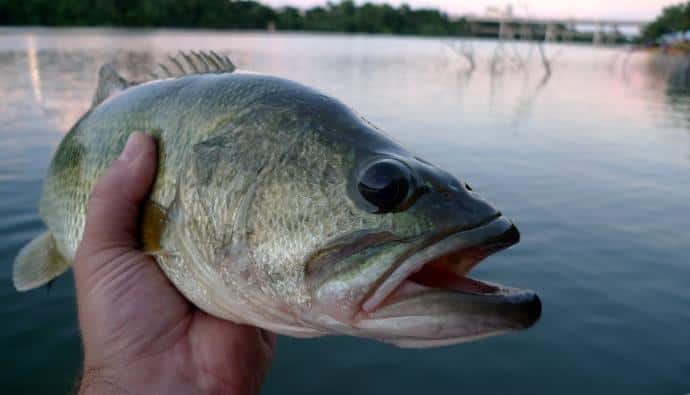
How To Fish for Bass Using Topwater Frog Lures
When targeting big bass, topwater baits are not the most versatile lures. But during summer and spring, bass in different spawning stages gather in and near shallows.
At this time, you can use a plastic frog for a big catch. The following are four ways to capture massive fish on the surface in the spring and summer:
Bass Sight-Fishing on Beds
Floating lures and fishing frogs have a distinct advantage when you fish on beds. You can place one across the bed, and it stays there without making any move.
Begin by throwing beyond the bed to ensure you don’t scare the fish. If the area is near the bank, drop your lure there before slowly sliding it into the water.
The bass will see the frog if you swim it gently over the target and allow it to remain on the surface. Do not be in a hurry. After a few minutes, only a small twitch will make you land a great catch.
Blind-Fishing Near Cover
Even if the beds are not visible, cover like weeds, stumps, felled trees, and lily pads are great spots to hook spawning bass. You can use a weedless frog to fish efficiently in any dense or gnarly cover.
Most seasoned anglers frequently utilize a 65-pound-test braided line or rigid flipping rod in this situation. The setting enables them to walk the topwater frog bait around wood or through weeds by gently jerking the rod so that the lure saunters from one side to another.
Utilize Topwater baits Tactics in Open Water
Using a frog does not require an obvious cover. In clear lakes, bass frequently gathers and mate in deeper water near the cliffside and a steeply sloping shore. Drop your frog along the bank and slowly and steadily move it back.
The lure should ideally be placed close to the bluff in most cases. You might be amazed by the depths to which bass would go to grab a buoyant frog.
Frog Fishing Tips for Catching More Bass
The design of most frog-style baits is perfect for fishing over weed mats. The light, weedless frogs, walk over the vegetation instead of bogging down in the muck-like lures with protruding hooks.
The following fishing tips will ensure you have greater yields:
Focus on Weed Edges
Move the frog over the weeds when fishing in lily pads or small matting areas. Keep working the frog the same way once it goes into open water. The frog’s legs will kick and surge to mimic the real thing if you keep wiggling your rod as the bait strikes open water.
Skim Over the Weeds
This is the most common and possibly most annoying method to fish a frog. When you slide the frog across matted foliage with steady rod twitches, bass will blow up on it, but the fish often miss the bait. If you skim the trick across the mat and then allow it to remain motionless in the mat’s openings, your chances of getting a decent hook set are increased.
Aim for Wood Targets
Overhanging willows, cypress trees, and laydowns are other great places to cast your bait. Swiftly wiggling the frog near the wood will create the same commotion made by a buzz bait.
However, the buoyancy frog has a distinct advantage compared to the buzzer because it may pause and wait for a strike as opposed to the buzzer, which must be kept going or it would sink.
Choose the Right Gear
If you want to fish in heavy cover, ensure you cast the lure on a baitcasting real and a 7’6” heavy action rod loaded with a 40 to 65lb braided line.
Most frog fishing applications call for a medium-heavy action casting rod with a quick tip. With each crank of a high-speed casting reel, more line is drawn in, helping to close the gap on long-distance hooksets that are common while frog fishing.
Trim Your Skirt
Fish won’t short strike the lure as often if the skirts of your frog are trimmed. A topwater lure can move back and forth more readily if one of the skirt’s limbs is left longer than the other.
Move Your Frog
Make fast, assertive flicks to the rod tip while maintaining a tight line to cause your bait to go back and forth.
Boil the Frog
Most frogs are very hard when new, making it difficult for you to get a strong hookset. Put the frog’s plastic body in hot water for a couple of seconds to improve how it “collapses.” As a result, the body of the frog will soften, making it easier for the hook to pierce.
Conclusion
Now you know how to fish with frog baits. Frog fishing is one of the compelling and enjoyable ways to capture bass, especially when they are feasting in the shallows in summer and spring. The weedless lures will enable you to fish in locations with dense foliage and cover, where other types of lures might struggle.



 Facebook
Facebook YouTube
YouTube
